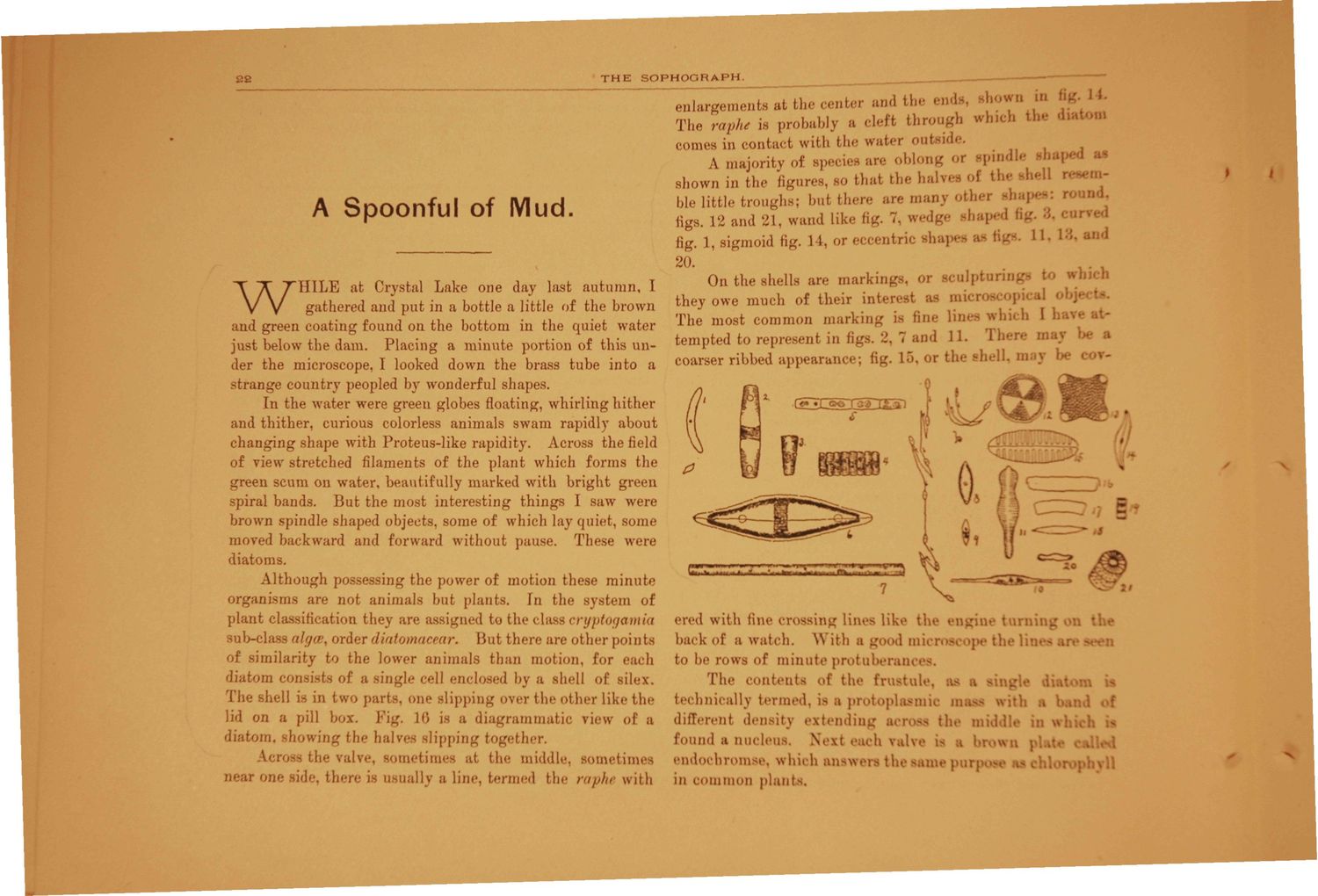Caption: Sophograph - 1890
This is a reduced-resolution page image for fast online browsing.

EXTRACTED TEXT FROM PAGE:
THE SOPHOGRAPH. enlargements at the center and the ends, *h rn ii The raphe is probably a deft through which a '1. « comes in contact with the water outside, A majority of species are oblong or spindle shaped as A Spoonful of Mud. HILE at Crystal Lake one day last autumn, I gathered and put in a bottle a little of the brown and green coating found on the bottom in the quiet water just below the dam. Placing a minute portion of this under the microscope, I looked down the brass tube into a strange country peopled by wonderful shapes. In the water were green globes floating, whirling hither and thither, curious colorless animals swam rapidly about changing shape with Proteus-like rapidity. Across the field of view stretched filaments of the plant which forms the green scum on water, beautifully marked with bright green spiral bands. But the most interesting things I saw were brown spindle shaped objects, some of which lay quiet, some moved backward and forward without pause. These were diatoms. Although possessing the power of motion these minute organisms are not animals but plants. In the system of plant sification they are assigned to the class cryptogamia ub-class «l<j<i\ order diatomacear. Hut there are other points of similarity to the lower animals than motion, for each diatom COn fcfl of a single cell enclosed by a shell of silex. The shell is in f no pari^. one slipping over the other like the lid o/i a pfl] box. Pig. 10 a diagrammatic n e w of a shown in the figures, so that the halve f tie 1 resem1 ble little troughs; but then- are many other -hap- figs. 12 and 21, wand like fig. 7. v. fig. 1, sigmoid fig. 11. or eccentric sha) shap fig*. J. •'>• 1 1 1 20. W On the shells are markings, or they owe much of their interest as The most common marking if fine tempted to represent in figs. 2, \ ami coarser ribbed appearance; fig. 15, or ulpturn to mi il lines which 1 1 1. 1 7 the shell, m be • crt'd with tine crossing lines like the engine I back of a watch. With a good microscope the li a are seen to be rows of minute protuberances. The contents of the frustule, . single riia: > technically termed, i t protop] :nic uutSS * li a different density tending across the mi. I in • • found a nucleus. Nexl I h valv- H a i wi endocbromse, which ans\> same purpose as J o m common plants. h J In diatom, showing tie- halves slipping together. Across the valve, sometimes at the middle, sometimes m-ar one ide, there is usually a line, termed tlH. raphe with
|